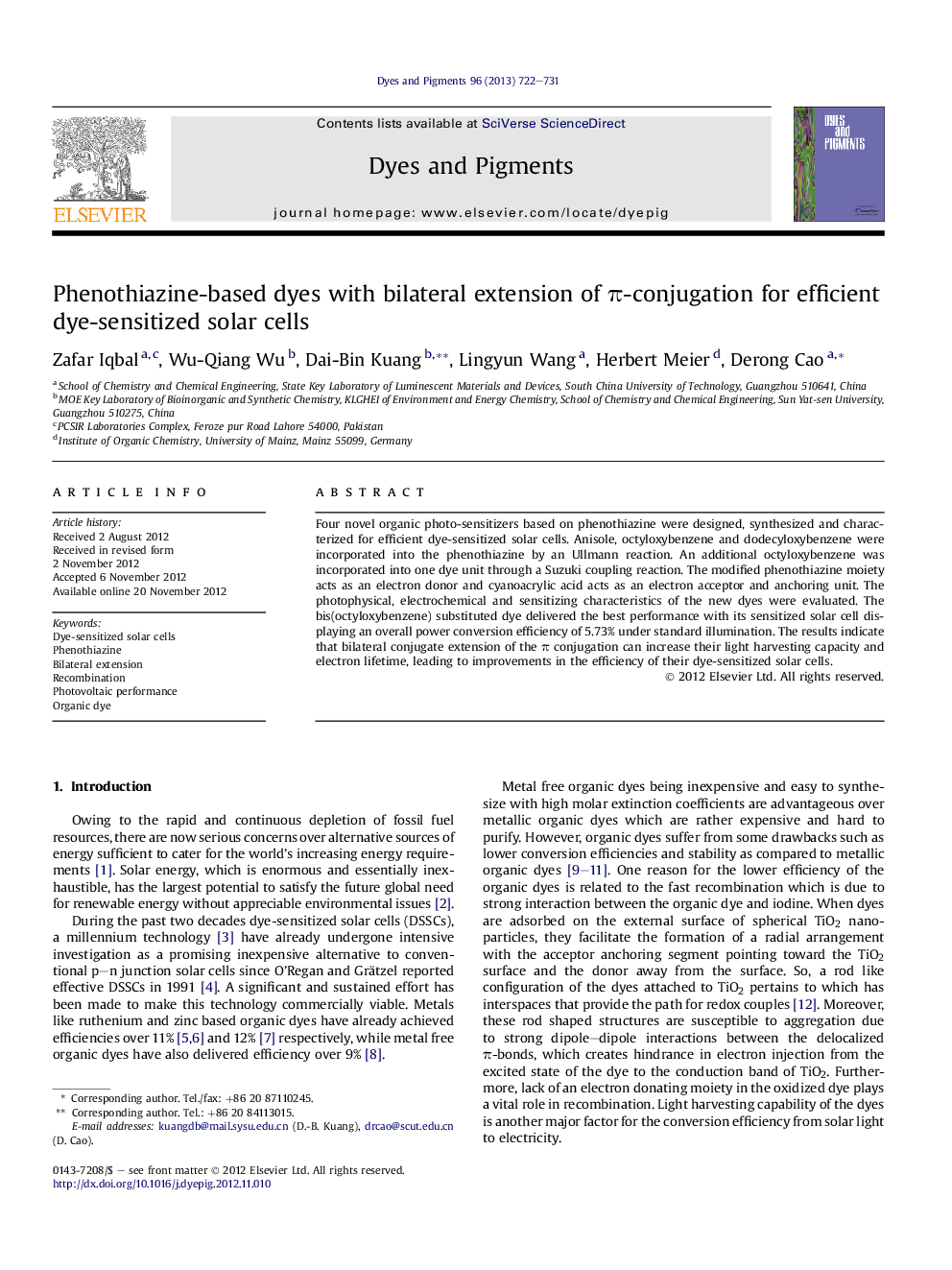| Article ID | Journal | Published Year | Pages | File Type |
|---|---|---|---|---|
| 176749 | Dyes and Pigments | 2013 | 10 Pages |
Four novel organic photo-sensitizers based on phenothiazine were designed, synthesized and characterized for efficient dye-sensitized solar cells. Anisole, octyloxybenzene and dodecyloxybenzene were incorporated into the phenothiazine by an Ullmann reaction. An additional octyloxybenzene was incorporated into one dye unit through a Suzuki coupling reaction. The modified phenothiazine moiety acts as an electron donor and cyanoacrylic acid acts as an electron acceptor and anchoring unit. The photophysical, electrochemical and sensitizing characteristics of the new dyes were evaluated. The bis(octyloxybenzene) substituted dye delivered the best performance with its sensitized solar cell displaying an overall power conversion efficiency of 5.73% under standard illumination. The results indicate that bilateral conjugate extension of the π conjugation can increase their light harvesting capacity and electron lifetime, leading to improvements in the efficiency of their dye-sensitized solar cells.
Graphical abstractComparing to the DSSCs based on lateral conjugation extended dyes Z1–Z3, η of the DSSCs based on bilateral conjugation extended dye Z4 was enhanced due to its relatively higher Jsc.Figure optionsDownload full-size imageDownload as PowerPoint slideHighlights► Four organic dyes based on phenothiazine with lateral and bilateral extension using an alkoxybenzene moiety were synthesized. ► Bilateral conjugation extension broadened and intensified the UV–Vis absorption of the dye. ► Bilateral conjugation extension led to high open circuit voltage and short circuit voltage of the DSSCs. ► Extension of alkoxy chains improved the recombination resistance and electron lifetime of the dye.
